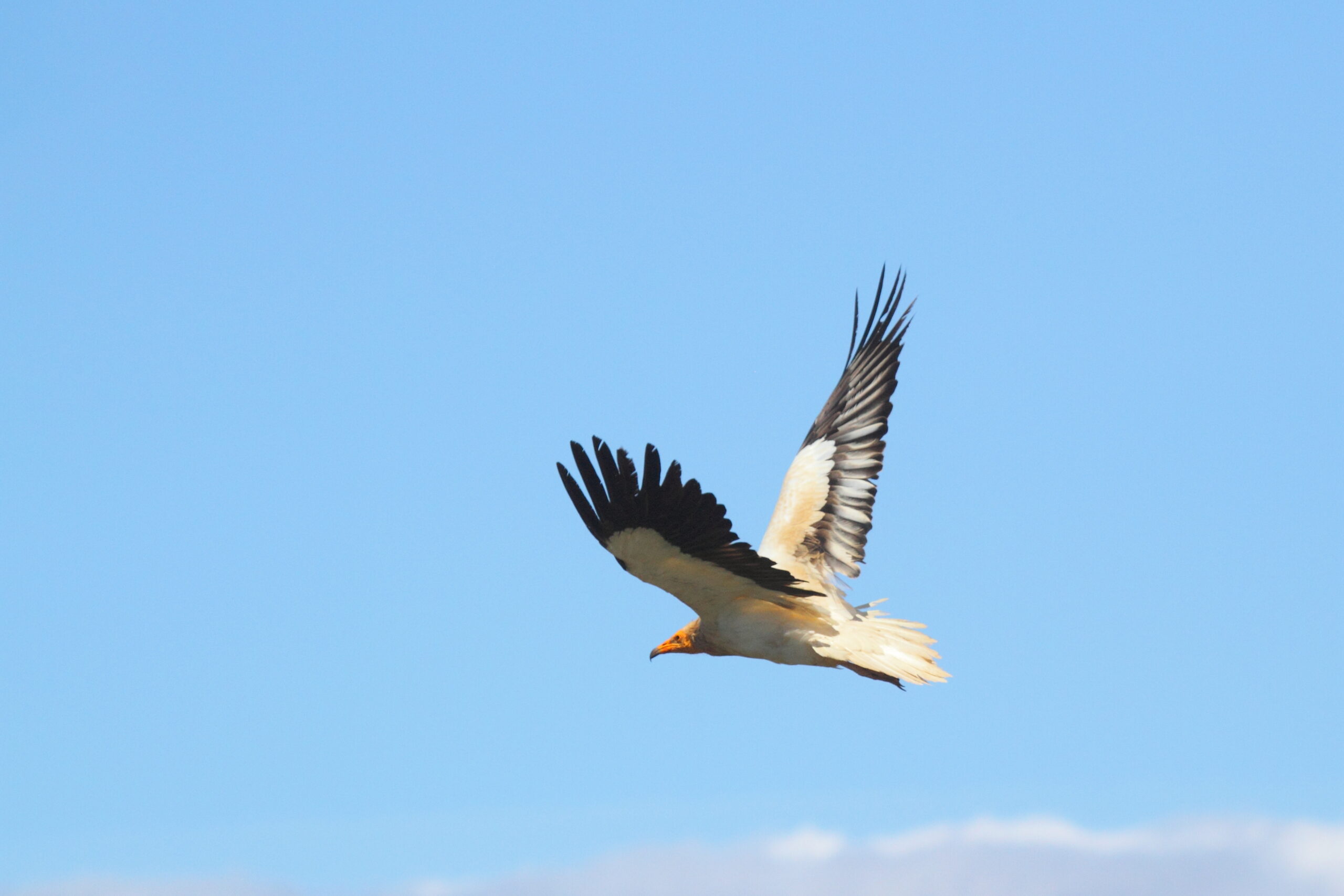Following Faia, Douro, and Bruçó, Egyptian vulture RUPIS – one of the 5 captured and tagged in the Douro valley as part of our LIFE RUPIS project, is also on the move across Morocco, after successfully negotiating the Gibraltar strait.
Rupis is the only of the 5 birds that was already tagged last year (see photo), and we followed it already on migration one year ago and throughout the winter in Africa – Rupis wintered last year in the National Park Boucle du Baoulé in western Mali – will he go there again?
Rupis did not breed this year –he is a 4th year bird, but we expect it to breed next year if it survives the winter in Africa.
The other three adult Egyptian vultures captured and tagged this summer within the LIFE RUPIS project are all travelling south – Douro and Faia are probably crossing the Sahara desert, as we stopped receiving their signals several days ago – there is no GSM coverage in that region of the world, and we hope they reappear in Mali or Mauritania sometime soon. As for Bruçó, it was crossing the Atlas range – and now Rupis is following its steps.
Only Poiares (the female found weakened in Poiares village, that was quickly rehabilitated, tagged, and that managed to continue to raise its chick) is still in Iberia.
All the 5 birds are equipped with a GPS tag that have been providing the project with valuable information about their detailed movement.
You can follow the movements of all these birds at our website here – https://www.4vultures.org/our-work/monitoring/egyptian-vulture-online-maps/
The LIFE RUPIS project aims to implement actions to strengthen the populations of the Egyptian vulture (and the bonelli´s eagle) at the trans-border Douro, by reducing the mortality of these birds and increasing their breeding success. The Egyptian vulture is the smallest vulture in Europe, and it is classified as “Endangered” – in Europe its populations have declined by 50% over the last 40 years.
The project includes equipping electric lines against electrocution, several actions that aim to minimize the threat of illegal poisoning, targeted management of over 1,000 hectares of important habitats for the species and also the creation of a network of supplementary feeding stations.
The project is implemented by the VCF and partners, including SPEA (BirdLife in Portugal), ATN and Palombar (regional conservation organisations in NE Portugal), the Junta de Castilla y Leon & the Fundación Patrimonio Natural de Castilla Y León, the Portuguese electricity distributor EDP-D, the Portuguese statutory conservation agency ICNF and the Portuguese environmental police force (GNR), and is co-funded by the MAVA Foundation.



